11 Best first-time Europe itineraries for 1, 2, or 3 weeks
Europe is going to be very busy in the summer of 2024 as the world is back to normal and travel demand is higher than ever. One other key factor is that most European currencies are still hovering at lower levels historically compared to the US dollar, which means that Europe will feel somewhat cheap again this year. In fact, according to our World Backpacker Index, European cities like Lisbon, Madrid, and Munich are about 30% cheaper to visit than Boston, Chicago, and New York City. In other words, flying to Europe might seem expensive, but most things will be cheaper once you get there compared to the costs of visiting a large US city.
Below you’ll find 11 of the most popular and best itineraries for a first visit to Europe. Your first visit is not really the time to be different or creative, and the famous destinations tend to be popular for a reason. In other words, it’s kind of silly to visit, say, Bulgaria, if you’ve not yet been to France or Italy. I lay out the best options along with how long to stay in each place as a general guide. I also discuss Mediterranean cruises, which can actually be an amazing way to see a lot of Europe on your first visit, especially if you don’t like going back and forth to train stations and airports every 2 or 3 days.
For a bit of fun you might be interested in the cheapest 5-star hotels in Europe, which start at US$80 per night for really nice hotels. It helps show that if you choose some of the cheaper cities, you can treat yourself to some luxury that you can’t afford in most other places.
This article was last updated in March, 2024.
There are 11 starter itineraries described in detail below
- Classic London and Paris
- England and Scotland
- Paris and Italy
- Mediterranean cruise
- France, Belgium, and Netherlands
- Paris and elsewhere in France
- Italy
- Spain
- Germany
- Switzerland
- Best of cheap eastern Europe
For each itinerary there are suggestions of other destinations that are easy to add on to the main cities.
Note: This article was most recently updated in March, 2024
Building the best itinerary for your first trip to Europe
Below there are 11 popular itineraries for one week in Europe. If you’ve only got a week then choose one of them and assume you’ll return again to conquer more of this amazing part of the world. If you’ve got more time then you can choose from some of the top add-on suggestions for each one.
Start in the most famous cities
Your first visit to Europe is no time to try to be different or edgy. I recommend that you focus on these 5 great cities before you start branching out into cheaper or more obscure places.
Keep your travel days to a minimum
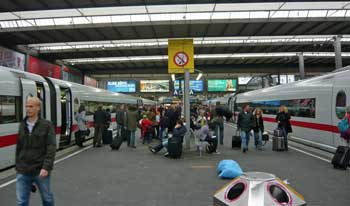
Spend 3 (or 4) nights in almost every major city
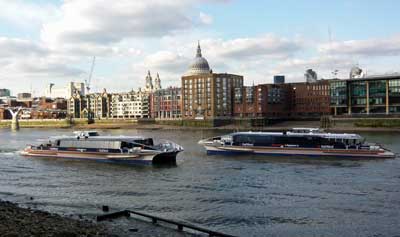
So many first-time visitors are initially planning on spending only 1 or 2 nights in major cities that I wrote a detailed explanation of why 3 nights is ideal for almost all European cities, even if you want to see as much as possible.
3 (or 4) nights will be enough for any city on your first trip
Most first-time visitors are tempted to move too quickly, but it can also be a mistake to move too slowly. It’s really amazing how much you can see in two full sightseeing days. If you spend too long in one city you’ll end up seeing things that are way down your list, while you could be in another city seeing things at the top of your list there.
Choose cities that are easy to reach from each other
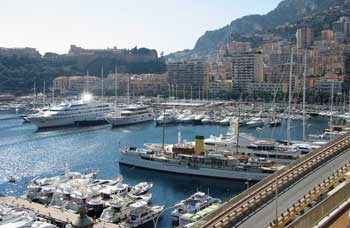
For your first trip it’s best to visit cities that are no more than a 5-hour train ride apart.
Choose cities that are connected by reasonable train rides rather than flights
To build on the point above, finding cheap flights within Europe is easy, but train travel is about a million times more enjoyable and less stressful. You’ll enjoy the train rides almost as much as the cities, so focus on places that are within 5 hours of each other by train.
Start with one of the classic itineraries below, and then add to it if you have more time
If you only have 7 days then you’ll find a list below of classic itineraries that are well-suited to a first visit to Europe. Hopefully you have more than 7 days though, and if you do you can add in one or more of the suggested add-on cities to build an itinerary that appeals most to you.
Best 1-week itineraries for the first time in Europe
Itinerary 1: Classic London and Paris
Fly into either city and take the 2-hour Eurostar train between them
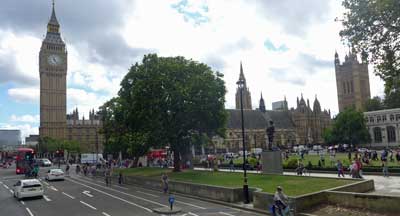
London highlights
- Big Ben and Parliament
- Westminster Abbey and St. Paul’s Cathedral
- Tower of London and Tower Bridge
- West End shows (Broadway equivalent) and classic pubs
- Buckingham Palace and Windsor Castle
Paris is actually far more beautiful than London and the food is famously much better as well. Since Paris gets so many tourists from non-French speaking countries, it’s easy to get by on just English, and the Metro system makes it fast and easy to get around. The architecture of both cities is amazing from the Tower of London, Big Ben, Westminster Abbey to the Louvre and the Eiffel Tower. These cities each pack a huge punch and they are very different from each other as well. Actually, England is arguably the best choice for your first trip to Europe.
Paris highlights
- Eiffel Tower
- Louvre Museum and Museum de Orsay
- Arc de Triomphe and other monuments
- Montmartre neighborhood and Sacré Coeur Cathedral
- Probably the world’s best affordable restaurants and wine
Best add-ons to London and Paris
- Edinburgh (2 or 3 nights, from London)
- Amsterdam (2 or 3 nights, from Paris)
- Bruges and Brussels (2 nights, from Paris)
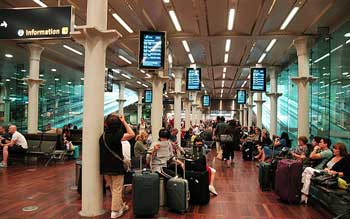
>>>Best one-week London and Paris itinerary in detail
>>>Check London hotel deals
>>>Check Paris hotel deals
Itinerary 2: England and Scotland
- London (3 or 4 nights)
- York (1 night)
- Edinburgh, Scotland (2 or 3 nights)
- Inverness, Scotland (2 or 3 nights)
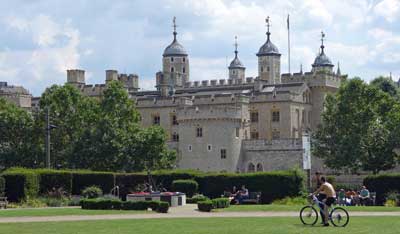
York is a small Roman city with intact city walls and one of the most famous cathedrals in Europe. Edinburgh is not only the capital of Scotland, but it’s easily the second most interesting city in all of Britain. If your time is short, skip York and spend more time in Edinburgh.
If you prefer to focus on the south of England on your first trip then the best option is to go to Bath or nearby Bristol after London. Bath is another of England’s top destinations and it’s a gorgeous city that has been a spa resort for many centuries. It’s also reasonably close to Stonehenge. You can also easily get to Cornwall in England’s southwest corner from Bath, and that’s a whole different and fascinating experience (with nicer weather than up north).
If you’ve got more than a week and want to spend more time in Scotland, especially in the summer months, the place to head to is Inverness. It’s a small town that is considered the gateway to the Scottish Highlands, but it’s an interesting and charming place on its own. You can take day-trips by bus to the highlights of the Highlands including the Isle of Skye and Loch Ness. Between you and me, it’s better to minimize time in Loch Ness or skip it altogether because it’s not one of the more photogenic parts of Scotland and the monster has always been a hoax.
Travel times between the recommended places
- London to York by train: 2 hours
- York to Edinburgh by train: 2.5 hours
- London to Edinburgh by train: 4 hours
- Edinburgh to Inverness by train: 3.5 hours
- London to Bath by train: 85 minutes
Best add-ons to England and Scotland
If you think you want to spend your whole trip in Britain you should have a look at our article on the best itineraries in England, Scotland, and Wales.
>>>Check London hotel deals
>>>Check Edinburgh hotel deals
Itinerary 3: Paris and Italy
- Paris (3 or 4 nights)
- Venice (1 night)
- Florence (2 or 3 nights)
- Rome (3 nights)
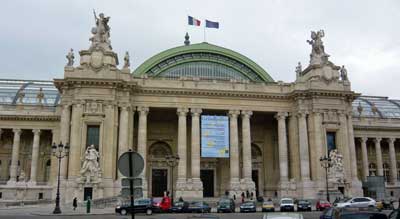
From Paris you can easily fly to Venice (or nearby Treviso) where you should try to spend about 24 hours. Venice is small enough to see in a full day, and so crowded that most people are satisfied to leave after that day. The key is to stay in the main part of the main island so you can enjoy Venice before the cruise passengers and day-trippers arrive, and also after they leave for the day. Two nights in Venice would not be wasted time, and it’s possibly the most gorgeous city in the entire world, but you can see the best of it in a bit over 24 hours.
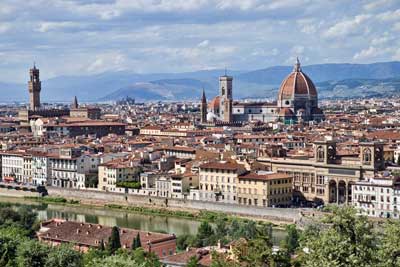
Rome also lives up to the hype and spending a day in the Vatican City will be a highlight even for non-Catholics, but it’s also a crowded and busy city so three days is usually enough for most people. Similar to Paris, Rome is an unusually beautiful city from almost any angle when you are in the historical center. You’ll walk through a stunning piazza (town square) and then turn a corner and you’ll see gorgeous buildings or public statues that are as nice as anything in the museums. Seriously, it’s worth a visit.
Paris to Venice flight: 1 hour 35 minutes
Venice to Florence by train: 1 hour 53 minutes
Florence to Rome by train: 1 hour 16 minutes
You can of course instead fly from Paris to Rome and then go north to Florence and then to Venice and fly home (or back to Paris) from there, and it would be just as enjoyable.
Best add-ons to Paris and Italy
France
- Nice/Cannes/Monaco (2 or 3 nights)
- Avignon (2 nights)
- Bourges (2 nights)
- Bordeaux (2 nights)
- Aix-en-Provence (2 nights)
- Reims (2 nights)
- Dijon/Burgundy (2 nights)
Italy
- Milan (1 or 2 nights)
- Lake Como (2 nights)
- Siena (2 nights)
- Cinque Terre (1 night)
- Naples/Sorrento/Amalfi Coast/Pompeii/Capri (3 to 5 nights)
- Sicily (3 to 4 nights)
>>>Much more information in this article about the best France and Italy itineraries
>>>Check Paris hotel deals
>>>Check Venice hotel deals
>>>Check Florence hotel deals
>>>Check Rome hotel deals
Itinerary 4: Mediterranean cruise
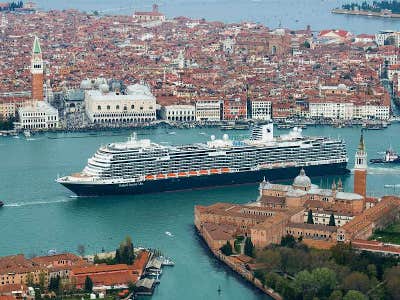
In spite of the reputation of cruises to be floating buffets, they can actually be an excellent way to visit a great number of amazing European cities in a short time. The ship typically is in port from the early morning until mid evening, often giving you the opportunity to have dinner in the city (unlike Caribbean cruises). Better still, the cruise ports are often near the center of town, so you can just walk off the ship and do sightseeing on foot or by public transportation.
Mediterranean cruises usually start at 7 nights but can go up to 3 weeks, which can provide an amazing tour of the entire region without having to pack and repack your bags more than once. They also can provide excellent value, especially compared to the price of taking trains or flights and finding new hotels in every destination.
Most popular Mediterranean departure ports
Barcelona, Spain – It’s an easy port to reach. Ships generally go from Barcelona with stops in France and then Italy.
Rome (Civitavecchia), Italy – The port isn’t very close to Rome, but it’s easy to get back and forth. Ships go west to France and Spain as well as south around the tip of Italy and then on to Croatia, Venice, and to Greece.
Venice, Italy – The cruise ships no longer dock close to the best tourist areas, but it’s easy enough to visit Venice for a day or two before boarding a ship. Ships starting in Venice go south and then head west and to Rome and then to France, or they go south to Croatia and then head east to Greece.
Athens, Greece – The cruise port of Piraeus is just south of Athens and easy to reach. Ships from Athens usually head west towards Croatia, Italy, France, and Spain, but there are also ships that visit Greek islands and Turkey.
>>>Check for deals on Mediterranean cruises
Alternative to consider: a river cruise
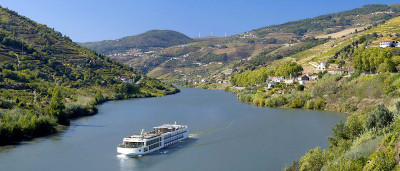
Amsterdam, Budapest, and Prague are some of the most popular river cruise ports, but there are dozens of others including many smaller towns in France where few other tourists will be when you stroll off the ship. There is little or no entertainment on the river cruise ships, but passengers don’t miss it because the entire day and into the evening is spent just steps from local cultural offerings and restaurants.
>>>Check for Europe and river cruise deals
Itinerary 5: France, Belgium, and Netherlands
Paris to Brussels: 1 hour 22 minutes
Brussels to Bruge: 58 minutes
Bruges to Amsterdam: 2 hours 45 minutes
Amsterdam to Paris: 3 hours 17 minutes
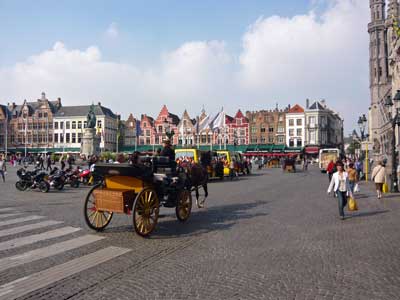
Spending 4 nights in Paris and 3 nights in Amsterdam would be a great trip, but if you want to see something else you’ve got a couple options in between. My advice is to spend an afternoon looking around the Grand Place (main square) in Brussels and then hop a 58-minute train ride to Bruges for a night or two. Brussels isn’t a great tourist city, but Bruges really is so it’s a better option for most people. Whatever you choose out of this group, you can be back in Paris on another high-speed train for your flight home.
Best add-ons to France, Belgium, and Netherlands
- Luxembourg City (1 or 2 nights)
- Cologne, Germany (1 or 2 nights)
- London (3 or 4 nights)
- Interlaken, Switzerland (2 or 3 nights)
>>>Check Paris hotel deals
>>>Check Bruges hotel deals
>>>Check Amsterdam hotel deals
Itinerary 6: Paris and elsewhere in France
- Paris (3 or 4 nights)
And a choice of:
- Nice/Cannes/Monaco (2 or 3 nights)
- Avignon (2 nights)
- Bourges (2 nights)
- Bordeaux (2 nights)
- Aix-en-Provence (2 nights)
- Reims (2 nights)
- Dijon/Burgundy (2 nights)
- Normandy (2 nights)
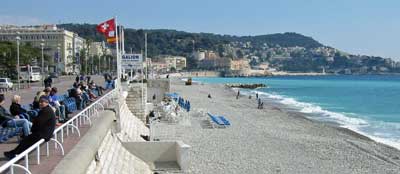
While Nice is a wonderful tourist city for a look at the French Riviera, the other larger cities of Lyon and Marseilles are probably better saved for a future trip because they are light on key sights compared to many smaller towns. Wine lovers can rent a car or take trains into Bordeaux or Burgundy. Since you can get between most of these towns by train in 2 hours or less, spending only 2 nights in each one is a reasonable option if you want to see a lot in a short time.
Normandy is an interesting choice and easy to reach in only about two hours by train from Paris. Some visitors like to see the famous WWII beaches and memorials, while others (especially in summer) like to check out one or more of the beach-resort towns. Deauville is one of the more famous of those, and it’s also famous for its horse race track and as one of the epicenters of the industry in Europe.
Best add-ons to Paris and elsewhere
- More France, of course
- London (3 or 4 nights)
- Interlaken, Switzerland (2 or 3 nights)
- Amsterdam (2 or 3 nights)
>>>Check Paris hotel deals
>>>Check Nice hotel deals
Itinerary 7: Italy
Rome to Florence: 1 hour 16 minutes
Florence to Venice: 1 hour 53 minutes
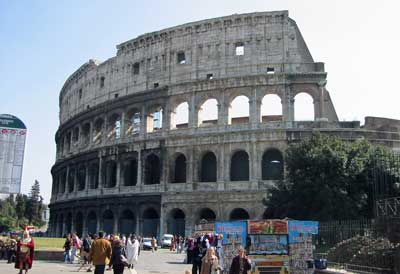
Venice is small enough that you can see the main sights in about 24 hours, and it’s so insanely crowded that many people tire of it after about a day as well. It’s better to pay more for a hotel to be on the main island and visit quickly than to save money with a hotel on the mainland where you’ll be in crowds going back and forth as well. Florence is the most relaxing of the 3, and also a great base for side trips to Pisa, Siena, and Cinque Terre, just to name a few.
Going to Italy? Here are the best first-time Italy itineraries for 3 days to 2 weeks (in much greater detail)
Best add-ons to Italy
- Milan (1 or 2 nights)
- Lake Como (2 nights)
- Siena (2 nights)
- Cinque Terre (1 night)
- Naples/Sorrento/Amalfi Coast/Pompeii/Capri (3 to 5 nights)
- Sicily (3 to 4 nights)
>>>Check Rome hotel deals
>>>Check Florence hotel deals
>>>Check Venice hotel deals
Itinerary 8: Spain
Madrid to Barcelona: 2 hours 30 minutes
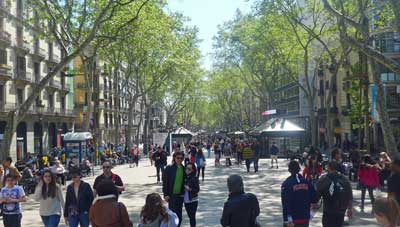
A huge part of Spain’s tourism industry is built around its southern beaches and islands such as Ibiza, Mallorca, and Tenerife (in the Canary Islands). For most people it’s best to ignore those places on your first trip because none of the beaches are special enough to spend days on them compared to the culture of the cities.
Best add-ons to Spain
By popular demand, I’ve added a full article on where to go in Spain with itineraries from 7 to 10 days up to two weeks.
>>>Check Madrid hotel deals
>>>Check Barcelona hotel deals
>>>Check Lisbon hotel deals
Itinerary 9: Germany
Berlin to Munich: 6 hours 2 minutes
Munich to Rothenburg ob der Tauber: 2 hours 56 minutes
Munich to Füssen: 2 hours 4 minutes
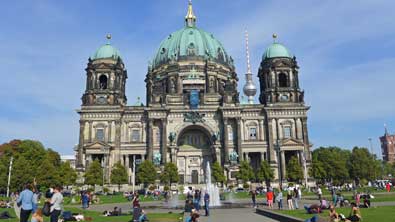
Those two cities are the keys to a Germany visit, and after that you’ve got a wide variety of choices. I cover most of the popular choices in my article on where to go in Germany, which covers several smaller towns that are major highlights.
Best add-ons to Germany
- Cologne (1 or 2 nights)
- Hamburg (2 or 3 nights)
- Amsterdam (3 nights)
- Prague (3 nights)
- Salzburg (2 or 3 nights)
- Vienna (3 nights)
- Interlaken, Switzerland (3 nights)
- Lucerne, Switzerland (2 or 3 nights)
>>>Check Berlin hotel deals
>>>Check Munich hotel deals
Itinerary 10: Switzerland
- Interlaken (3 nights)
- Bern (1 night)
- Lucerne (3 nights)
Zurich Airport to Interlaken: 2 hours 10 minutes
Interlaken to Bern: 53 minutes
Bern to Lucerne: 1 hour 50 minutes
Lucerne to Zurich Airport: 1 hour 3 minutes
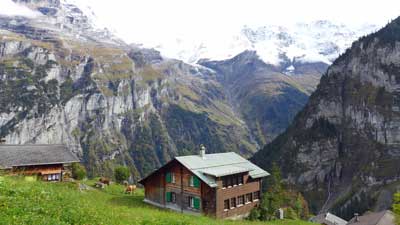
Interlaken is the best hub for the most dramatic Alps views and experiences. The one-hour cable car ride up to the Schilthorn observation deck is something you’ll never forget, and the only thing that might be more dramatic is the train ride up to the Jungfraujoch station, which is the highest in Europe. Lucerne is almost as beautiful with a scenic lake at its heart and also great mountaintop views nearby. If you do want to see a Swiss city then the capital of Bern is the most interesting and photogenic on a short visit. Read more about where to go in Switzerland for even more ideas.
Best add-ons to Switzerland
>>>Check Interlaken hotel deals
>>>Check Lucerne hotel deals
Itinerary 11: Eastern Europe’s best cheap cities
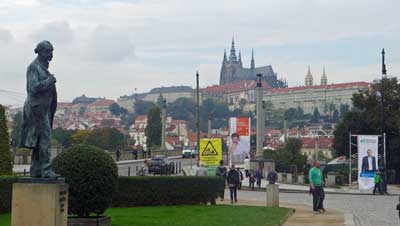
Each of these cities is beautiful and historic, but English is less widely spoken so they can also be quite a bit more challenging for a first-time visitor. Another difficulty is that the trains between them are still quite slow compared to the high-speed rail in the West, so it takes most of a day from one to another, and a bus is often a better choice. I cover this best cheap Europe itinerary more fully in the linked article.
Prague to Budapest: 6 hours 41 minutes
Budapest to Krakow: 9 hours 54 minutes (flying might be better)
Best add-ons to cheap Eastern Europe
- Cesky Krumlov, Czechia (2 nights)
- Ljubljana, Slovenia (2 or 3 nights)
- Split, Croatia (3 nights)
- Belgrade, Serbia (2 or 3 nights)
- Sarajevo, Bosnia and Herzegovina (2 or 3 nights)
- Sofia, Bulgaria (2 or 3 nights)
>>>Check Prague hotel deals
>>>Check Budapest hotel deals
>>>Check Krakow hotel deals


Hi,
We are family of 4 and planning our trip to Europe in September (7th-15th) for 9 days. We are flying in and out of France and renting a car to go around countries/cities. Planning our itinerary between France>Belgium>Netherlands>Germany>France. Need some advice on our planning as it is our first family trip to Europe and also, let us know if renting a car would really be a better idea. Thanks!
Madhavi,
Renting a car for a family of four in Europe can be a good idea, but only if you mostly want to focus on smaller towns and rural areas because parking in the big cities is difficult and expensive. Also, you can’t really use a car to do sightseeing in larger cities because there are very few parking lots and they are really set up for public transportation. If you have 9 days I’d really choose 3 cities (rather than countries) and spend 3 nights in each. If you are flying into Paris it’s good to stay 3 nights there. You could then take a train to Bruges or Amsterdam for 3 nights and then you could take a train into Germany for a few nights and then a train back to Paris.
If you buy the train tickets fairly soon you should be able to get pretty good deals on them, and if there are children you can get cheaper tickets for them. Again, it really depends on exactly where you want to go. If you are happy to explore small towns and stay in hotels on the edge of town that have a parking lot, then renting a car can be good and you can probably fit in more than just 3 cities. Still, if you are planning on exploring Paris it’s better to wait until you are leaving the city to rent a car. I’m happy to help if you have other questions. -Roger
Hey Roger,
This is awesome site you have, and thanks for all the information you give so diligently.
Me and my friend are planning to travel to Europe in Nov for 15 days. Its our first trip to Europe. We have planned on Belgrade, Budapest, Krakow, Prague and Amsterdam 2-3 nights in each. Do you think its ok keeping the weather in mind around that time in Europe? Also we don’t want to rush it up. Is it also possible to sneak in Barcelona as I really wanted to visit for my first trip. Your inputs would really be very helpful.
Jacob,
Thank you. Those cities will all be quite chilly in November, but everything will be open and the weather should still be nice enough for sightseeing. You may have read my advice on three nights being the ideal length of stay in almost all European cities. One challenge you’d have with this itinerary is that the trains between those cities are all quite slow so it will take you 7 to 10 hours on the train each time you change cities, and Prague to Amsterdam even a bit longer. You could fly, but from the time you check out of your hotel in one city until you check into your hotel in the next city it will take 5 to 6 hours even if it’s only a one-hour flight, so it doesn’t save much time and it’s MUCH less enjoyable and more stressful. Personally, I would hate to fly every 3 days, dealing with airport transportation and security and all that.
If I were you I’d probably skip Belgrade unless it’s a family thing or you have other personal reasons for going. It’s a nice enough city (and quite cheap), but there isn’t much to see, especially compared to the others and that includes Barcelona. So I’d add Barcelona in and drop Belgrade, although of course you’d have to fly in and out of Barcelona. I’m happy to help more if you have other questions. Be sure to check those train journey times and you might end up changing your itinerary a bit. -Roger
Hi Roger, my husband and I will be travelling to European countries for the first time for 21 days in Dec. We are currently thinking about Italy, Holland, France and Switzerland. We hope to include Amsterdam and Greece(Santorini) inside too.
Is this planning doable? Can i seek your advise on how do we travel between these countries and cities? what are some of the transport options?
Rachel,
It might be helpful to have a scan of my list of the best European destinations in December. In that article I discuss why these places are good in December along with the weather you can expect.
If you’ve got 21 days I’d urge you to try to look for 6 to 8 cities to visit (rather than countries) and probably 7. Three nights is the ideal length of stay for almost all European cities for those wanting to see as much as possible on a trip. Switzerland can be a little different and this little guide can help you decide where to go and how long to stay.
Also, the Greek islands are very seasonal and most hotels and restaurants and shops are closed from November through early May. Santorini has quite a few full-time residents so there are some things still open, but I don’t think I’d recommend it. Nearly all of the restaurants there are open-air places so if you go in December you’d have to go into local indoor places where you’d be some of the only tourists on the island.
Italy is a great choice in December though, aside from the beach areas and lakes. I think the most efficient way to do this would be to fly into Amsterdam and then take a high-speed train to Paris. Then take a train to Interlaken and Lucerne and then a train through the Alps to Venice and then onto Florence and finally to Rome. That would be just about perfect in 21 days and it would be nicest to take trains rather than having to fly. I’m happy to help you more with this so let me know if you have any other questions. -Roger
Hi Roger,
We are travelling for our first europe trip (12 days) in August 2019. We are three, my self, husband and kid of 7 years. (4 days in italy, 5 days in switzerland and 3 days in paris)
After 4 days in italy, we will be travelling from milan to lucerne via train.We have made our base as lucerne for 5 days (4 nights).
in these 5 days, we are planning to cover Jungfrau, mt. titlis, lucerne.
Please suggest whether we shud go for swiss pass or swiss half pass. Or we need not to take any pass and can go for individual tickets. Also, suggest any other place which can be easily visited from lucerene.
Also, confused between a day trip to Rhine falls or Basel? Which one is better option?
From lucerne, after 5 days, we shall be going to paris thru train from basel.
Whether swiss pass or swiss half pass will give some discount in TGV train from Basel to Paris. and also whether swiss pass will give some discount to our train from milan to lucerne.
Thanks
Neeru
Neeru,
I’ll try to answer your questions in order. If you’ll be doing Jungfraujoch rather than Schilthorn then the Half Fare Card is almost certainly your best choice. And your child can ride free if you request a Swiss Family Card when you order your Half Fare Card. You’ll see some other ideas of what to visit in Switzerland near Lucerne on this article.
I’d do the Rhine Falls day trip over Basel. Basel isn’t actually a very interesting city, especially compared to the amazing scenery you’ll be seeing. On your way to Paris you’ll be changing trains in Basel anyway so you might just schedule yourself a one or two-hour break and then walk around town a bit before moving on to Paris.
A Half Fare Card will obviously get you 50% off your ticket from Lucerne to Basel, but it gives no discount on the Basel to Paris portion. It’s best to buy those French train tickets as early as possible for the best fares. The fares within Switzerland are the same no matter when you buy, but on international trains and those within most other countries, they start out cheap and get more expensive as more seats are sold. A Half Fare Card will get you half price on the portion of the train ticket starting at the Swiss border. With international tickets like that it might not help because they are usually discounted if you buy early. But you might check the fare for Milan to the Swiss border and then half price from there to Lucerne, versus the whole ticket at once. I’m not sure which will be cheaper. Let me know if you have any other questions. -Roger
Hi Roger,
Thank you for all your wealth of information.
My husband and I are planning our trip to Europe for the first time. We will be visiting friends in Germany so would like to tour a bit of Europe. Our return flight from our home is to Porto. The countries we have in mind is Portugal, Spain, Paris, Italy. The length is 10 days and the rest of the trip will be in Germany. Any suggestions on which countries is it best to take trains between, and what are the best attractions of each country. In addition, my husband wants to visit Anfield to watch a Liverpool match, how do i get tickets for the match?
Thanks!
Sharlene
Sharlene,
If you only have 10 days to work with I’d suggest choosing 3 or maybe 4 total cities for that part of the trip. If you try to move faster than that you’ll end up spending at least half of your trip on trains or in train stations rather than seeing the actual sights. I highly recommend staying 3 nights in almost any European city you visit.
Since you are flying into Porto I’d recommend visiting Lisbon for 2 or 3 nights. From there it’s actually best to fly somewhere else because the train service between Lisbon and Madrid only goes overnight. You could fly to Barcelona and spend 3 nights there and then take a train to Paris for 3 nights. If you want to visit Italy you’d really want at least 6 or 7 days, so it’s probably better to do that on another trip. It’s better to choose just a few places that you really want to visit and then plan your trip around that, hopefully choosing places that are easy to reach from one another.
Buying tickets for Premiere League matches from big teams is tricky. They sell most of their tickets to season ticket holders and “members” of the club. You can buy tickets on the aftermarket from Stubhub and such, but they will be expensive. Liverpool sells a few seats about a week before each match online. Best of luck and let me know if you have any other questions. -Roger
Hi Roger,
Thanks for all of the knowledge! I’m hoping you could give an opinion on a trip I am trying to plan with my husband. We are looking at April 2020 however I am nervous about towns being shut down. We would love to hit some major cities/countries and some unique ones if possible for a 2 week trip. I studied abroad years ago in London and saw Rome, Florence, Venice, and Paris, and I selfishly would like to explore new cities but don’t want to jip my husband! My dream places are southern Italy/France, Greece, and Spain. Any advice considering the above? I would most definitely re-see places, but want at least one or two new cities.
Thanks!
Stephanie
Stephanie,
This sort of conflict comes up a lot, even in my own relationship. I’m not sure what you mean by “nervous about towns being shut down” though?
You’ve already hit the Big 3 in Italy, and I’d save southern Italy for another trip. In April the beaches will be mostly empty and most places will still be closed. Athens is lively all year, but the Greek Islands are also mostly dormant until May each year, so I’d save that as well.
I think Spain is your best option, and April is a really nice month for the weather there (although it’ll still be too cold to sunbathe at the beaches until the end of the month). There is now a direct train from Paris to Barcelona in about 6 hours, and the high-speed train from Barcelona to Madrid takes only about 2.5 hours. My suggestion would be to have your husband choose among London, Paris, and Italy for 7 to 10 days of the trip, and then head to Barcelona and Madrid for the final 6 nights or so. So you could do London then Paris then Barcelona and then Madrid, with perhaps 4 nights each in London and Paris. That would be a great introduction to Europe and then add in Spain for a new flavor in the end? I’m happy to help more if you have any other questions. -Roger
Hi Roger! Looking at 3 weeks in Europe in December and over the Christmas holiday. Leaning towards Italy. I have read to stay away from the Amalfi Coast during winter, is this correct? Also, besides Italy, would you recommend any other countries during this 3 week trip? (Been to London and southern England, France including Paris, Mont Saint Michel and the WW2 beaches.) What about Vienna or other recommendations? Thank you in advance!
Tamara,
I think Italy is the best choice in winter for most people who want to go to Europe because the weather is decent and all of the big cities and major attractions are still going. As for the Amalfi Coast, yes, it’s really dead from mid October through April. Those main towns such as Positano are basically vacation villages and most things are closed outside of the season. That’s true for pretty much any beach town and even the lake such as Lake Como.
As for where to go in Europe in December, you can read my advice in that article. Vienna could be a good choice if you are interested in culture such as classic music and waltzing and such. You could also go to Spain on a cheap flight. Barcelona and Madrid are really good in winter (compared to most of the rest of Europe), and Seville and Granada are lively as well. Let me know if you have any other questions. -Roger
Thanks, Roger! We will have a Swiss Travel Pass (also spending some time in Lucerne and maybe Bern on the way out of the country). Our cruise stops in Naples, Rome, Livorno, Cannes. I’m nervous about getting burnt out on full-day excursions. We really want to see the Amalfi Coast from Naples and spend as much time as possible in Rome. Is it a huge mistake to skip Florence (instead just biking around Tuscany or Cinque Terre)? I’m not particularly drawn by the art scene, and we’ll have visited the Louvre in Paris beforehand. Thanks!
Hello again Roger! We embark on our trip this weekend. We have two full days in Interlaken and I’m debating the best sights. The options: Schilthorn, Jungfrau, Lake Thun boat and then Mt Niesen, hang gliding, Harder Kulm. What would be at the top of your list for a first-timer? Thanks so much!
Steven,
I think the two most unforgettable experiences in that area are Schilthorn and Jungfraujoch. Schilthorn costs less and takes a bit less time, and it’s fully covered by the Swiss Travel Pass. Jungfraujoch is more dramatic and perhaps the better choice if you have the Half Fare Card and a good budget. You are going to have a fantastic time. -Roger
Hi Roger,
I will be visiting Europe in either August or September. I have visited Europe a number of times throughout the years. For this trip, I am trying to decide which cities to visit. I am debating on the following:
Berlin>Prague>Vienna>Budapest
Switzerland>Milan>Venice
Portugal and Spain
Spain, including some islands such as Ibiza
What would you recommend for visiting during August/September? We will be traveling for 10-14 days.
Thank you,
Edna
Edna,
Those all look like great choices, but there is actually a big difference between August and September for them. Spain and Portugal are quite hot and sometimes uncomfortable in August, and all of the beach towns (including Barcelona) are mobbed the whole month with people from elsewhere in Europe who have the whole month off. In September the weather cools off just a bit and the crowds are much smaller, along with cheaper hotels and such. So if you are arriving after the first few days of September, I think Spain and Portugal or Ibiza would be great.
Switzerland’s weather doesn’t change much between those two months, although August tends to be wetter in the Alps than September. Milan actually isn’t a top tourist city and Venice will be insanely crowded in either of those months (but still worth a day or two).
If you’ve got at least 12 days in Europe I think Berlin, Prague, Vienna, Budapest would be fantastic. They are all pretty crowded in both months, but they are all big cities that are suited to the number of visitors they’ll have then so I’d go either month.
As for Spain, I’d recommend Madrid and Barcelona for 3 days each as a foundation. You’d also have time to hit Seville and Granada for 2 or 3 days each, or substitute Valencia for one of those. Ibiza is really fun, especially if you are interested in the sort of culture it’s famous for (dance music and parties etc), but the beaches on the Spanish mainland are generally better so you could do the Costa del Sol around Malaga instead. I haven’t been to Mallorca, mostly because most people agree that it’s pretty generic.
Long story short, it’s hard for me to choose one option over the others for you, and hopefully this has been at least a little helpful. Berlin and Prague are two of my favorite European cities so if you are in the mood to have a more urban European experience, I think that would be a great option. Let me know if you have any other questions. -Roger